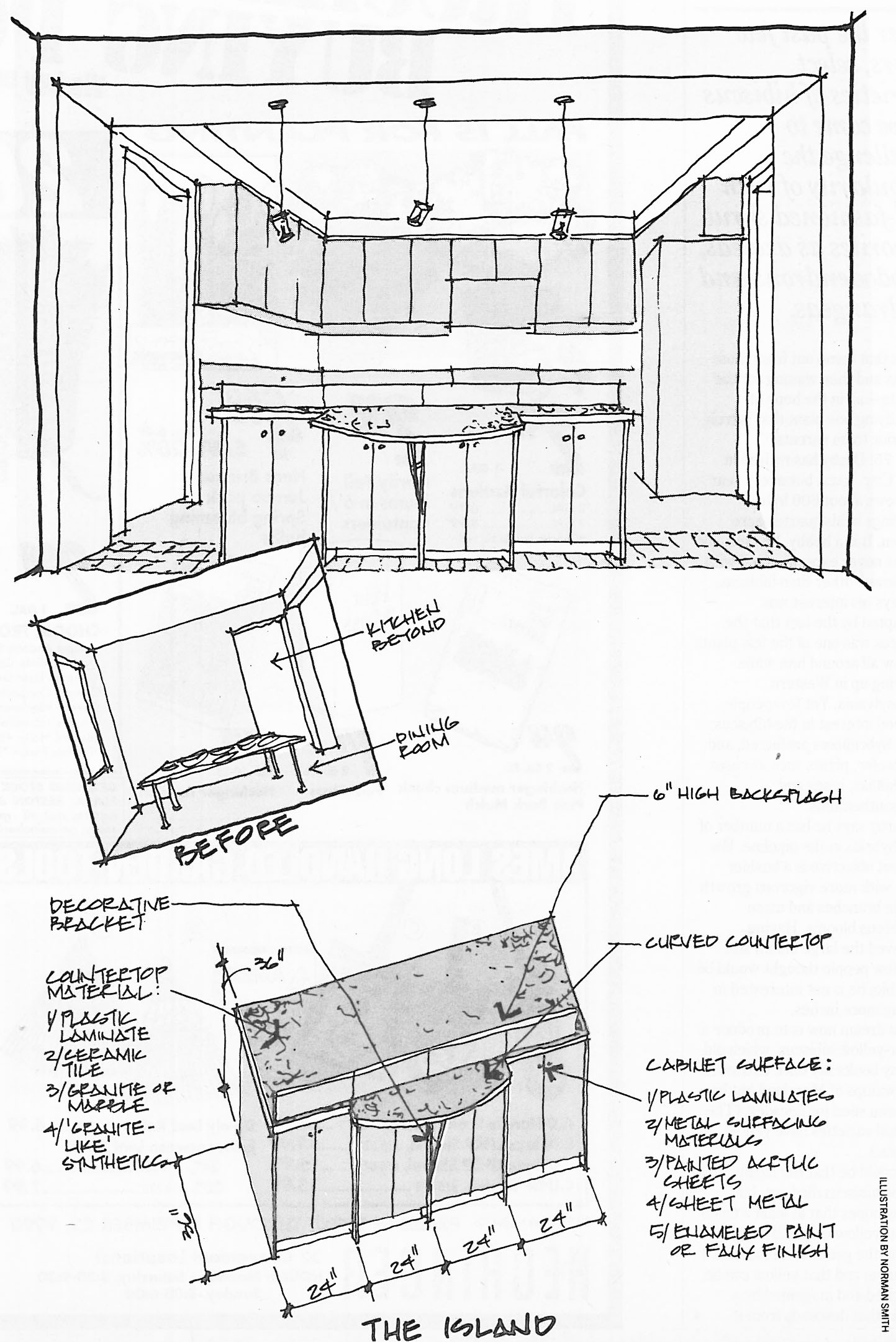An Innovative Divider
New Materials Can Make Cabinets a Visual Accent
An open kitchen and dining room layout is an efficient and popular idea, particularly in smaller houses or apartments. The two spaces can maintain spatial and visual separation by using an island cabinet in between as an appealing centerpiece.
In the last several years, designers and architects have been experimenting with the surface and finish materials such as metals, stone and synthetics to lend a tactile or visual accent to a room. Unusual materials, used judiciously, are not expensive and a material that is sumptuous to the hand and eve can often transform an ordinary object or surface into a memorable one.
The island cabinet illustrated here would show off some of these materials. As part of a kitchen remodeling, including installation of new cabinets and removal of a wall (see “before” picture) the island becomes a piece of furniture that separates the two spaces while allowing access between them on either side. Its center location and high back splash also help to hide parts of the kitchen from guests sitting at the dining room table.
To provide cabinet storage space on both the kitchen and dining room sides, standard 24-inch-deep base units facing the kitchen are placed back-to-back with 18-inch-deep units facing the dining room. Since an eight-foot-long cabinet run might be a bit formidable, the unit is broken into four two-foot-wide individual units with a series of spacers that create vertical lines along the cabinet front. The two middle units extend two to three inches past the two end units and the counter top above is gently curved to punctuate the composition and to provide a small serving or warming area. Beneath the curve a decorative brace adds a delicate detail.
Cabinet and counter top materials are available to fit almost every budget and taste. For the cabinets’ surfaces, plastic laminates are available in a wide range of colors, textures and patterns. These laminates are also available with integral color that eliminates the brown edge formerly characteristics of them.
Decorative metal surfacing products that can be applied as laminates can be found in various patterns and finishes such as brushed or gridded aluminum and pewter. Another recent product is modified acrylic sheets with factory painted surfaces (VitriCor by Nuvacor) that resemble high-gloss, hand lacquered finishes. Metal sheet goods in copper, stainless steel and aluminum can also be used.
Choices for counter top materials are equally varied. Plastics laminates can be used and formed into curves as illustrated. Ceramic tile or natural quarried materials like granite, marble or even slate can also be considered. Less expensive synthetic surfaces that consist of polymer acrylic alloys with integral particles resemble granite and can be easily cut and worked.
Norman Smith practices in the Washington area. For help with your design problems, send snapshots and dimensions to him in care of info@taurusdev.com
